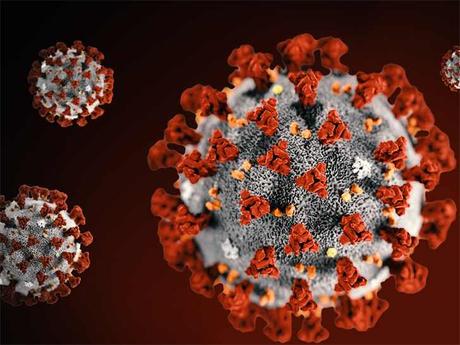Share This Post
Blood Clots Are Another Dangerous COVID-19 Mystery

The new coronavirus pandemic seems to be causing sudden strokes in adults in their 30s and 40s who are not otherwise terribly ill, doctors reported Wednesday.
And doctors who are taking care of COVID-19 patients have been trying to make sense of this Medical Mystery, because when they take blood samples of COVID-19 patients, it will clots in the tubes.
Also, when nurses insert catheters for kidney dialysis and IV lines to take blood, the tubes quickly become clogged with clots.
So, some patients who heard that hospitals are overwhelmed by coronavirus cases may be unwilling to call 911, and there’s growing evidence that this may be connect with COVID-19 infection can cause the blood to clot in unusual ways, and stroke.
And this is making management of these coronavirus patients very challenging, so, apart from well-known breathing problems, blood clotting are a significant danger for COVID-19 patients.
Because, blood clots are making COVID-19 patients to have heart attacks and strokes; form strange rashes on their skin; and get red, swollen wounds that look like frostbite on their fingers and toes.
COVID-19 Blood Clot Complications
Also, Dr. Thomas Oxley, a neurosurgeon at Mount Sinai Health System in New York, and colleagues said that five people they treated who were under the age of 50, and all had either mild symptoms of COVID-19 infection or no symptoms at all.
“The virus seems to be causing increased clotting in the large arteries, leading to severe stroke,” Oxley told CNN.
And he added that “Our report shows a seven-fold increase in incidence of sudden stroke in young patients during the past two weeks. Most of these patients have no past medical history and were at home with either mild symptoms (or in two cases, no symptoms) of COVID.”
“All tested positive. Two of them delayed calling an ambulance.”
Also, other physicians have reported that people are unwilling to call 911 or go to emergency rooms because of the coronavirus pandemic.
And we know that it’s uncommon for young people to have strokes, especially strokes in the large vessels in the brain.
Also, the team wrote in a letter to be published in the New England Journal of Medicine that “For comparison, our service, over the previous 12 months, has treated on average 0.73 patients every 2 weeks under the age of 50 years with large vessel stroke,” That’s fewer than two people a month.
Although, COVID-19 can certainly cause breathing problems, but it’s not just a lung disease, it’s actually a disease of the endothelium.
And this infection starts in the lungs since breathing is the easiest way for the virus to enter the body. And once it infects the lung cells and begins to destroy them, it travels into the bloodstream and then infects endothelial cells resulting to endotheliitis.
COVID-19 Causing Blood Clots, and a stroke in a large blood vessel causes severe damage if it is not removed right away. At least one patient has died, and others are in rehabilitation facilities, intensive care or in the stroke unit. Only one went home but will require intense care, Oxley said.
“The average person who has a large vessel stroke is severely impaired,” Oxley said. “It means it a bigger clot. It includes one of the largest arteries in the brain.”
Brain cells die when blood flow is stopped, and the longer it’s blocked, the wider the damage in the brain. Quick treatment is vital. “The most effective treatment for large vessel stroke is clot retrieval, but this must be performed within 6 hours, and sometimes within 24 hours,” Oxley said.
Oxley said his team wanted to tell people to watch themselves for symptoms of coronavirus infection and to call 911 if they have any evidence of stroke.
“Up until now, people have been advised to only call for an ambulance with shortness of breath or high fever,” he wrote.
The easy memory device for stroke, he said, is “FAST”: F for face drooping, A for arm weakness, S for speech difficulty and T for time to call 911.
The National Institute for Public Health of the Netherlands report on evidence for thromboembolic disease and potential diagnostic and preventive actions that can be taken. “Worldwide, COVID-19 is being treated as a primary pulmonary disease,” said Edwin J.R. van Beek, M.D., Ph.D., director at Edinburgh Imaging, Queens Medical Research Institute, at the University of Edinburgh, U.K. “From the analysis of all available current medical, laboratory and imaging data on COVID-19, it became clear that symptoms and diagnostic tests could not be explained by impaired pulmonary ventilation alone.”
Also, a case report from Cooper University Hospital in Camden, New Jersey, describes multiple areas of pulmonary and arterial thrombosis in an 84-year-old man with COVID-19.
“COVID-19 is more than a lung infection,” Professor van Beek said. “It affects the vasculature of the lungs and other organs and has a high thrombosis risk with acute life-threatening events that require adequate treatment with anticoagulants based on laboratory monitoring with appropriate imaging tests as required.”

Share This Post
